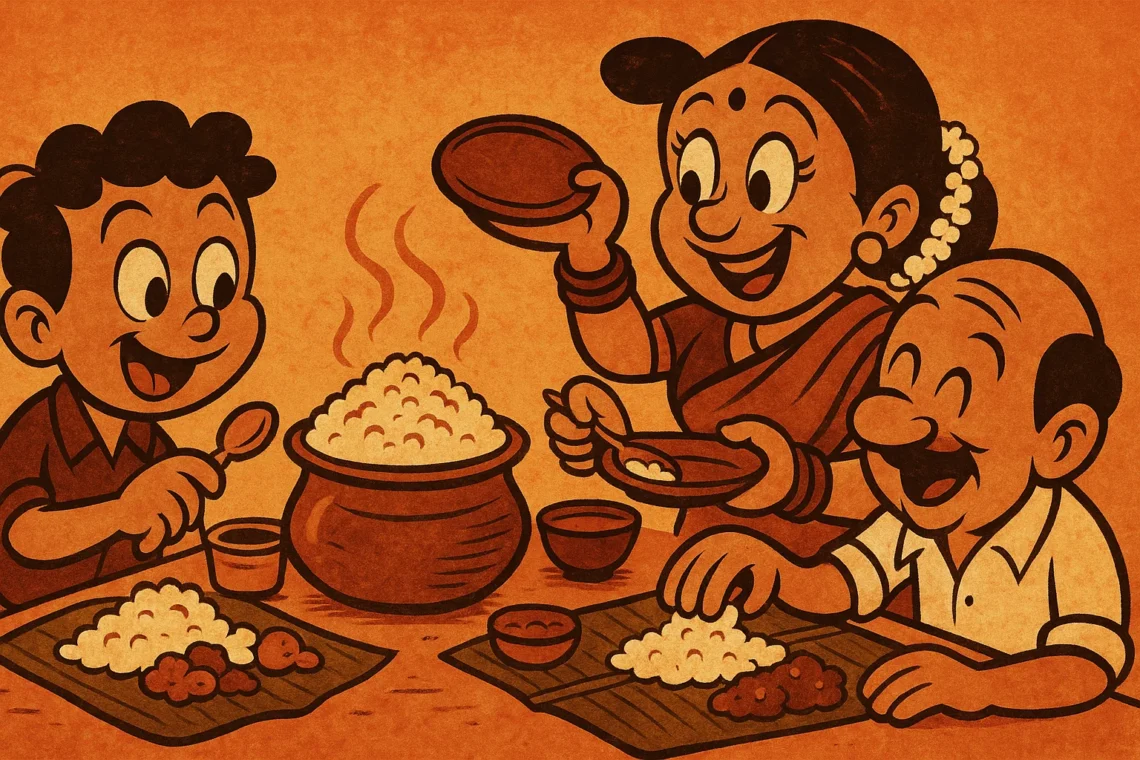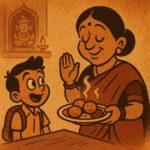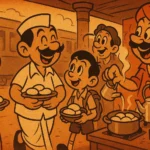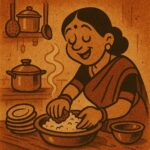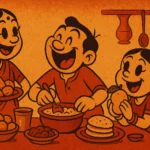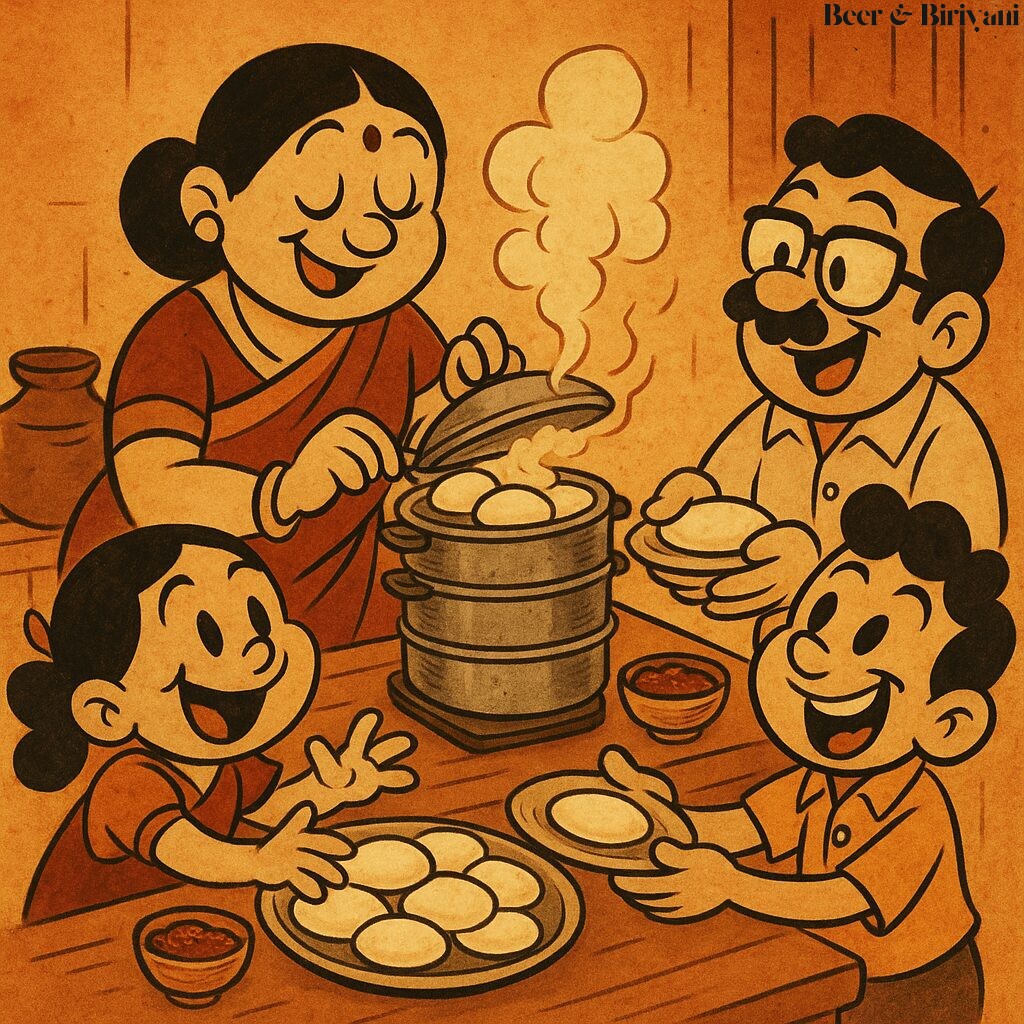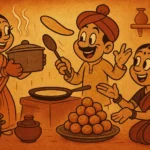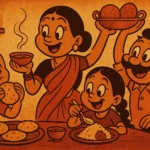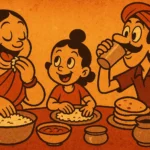You can flirt with wheat. Stack chapatis with pride. Even get experimental with millets or oats. But in most South Indian homes, at the end of the day — and more specifically, at the end of every meal — rice wins. Not because it’s fancy. Not because it’s trending. But because it’s home. It’s the quiet anchor of the plate, the unassuming staple that outlasts fads and flourishes, the thing we return to when we want to feel full — not just in body, but in being.
I grew up in a house where you could eat idli for breakfast, parotta for lunch, and still crave that one final ladle of steaming white rice at dinner. Not because we were hungry. But because something felt incomplete without it. Chapati was okay. Pulao was fine. But only rice — soft, hot, fragrant rice — with sambar, rasam, or curd — could make the day feel fully eaten.
Rice Is the Canvas
In South Indian kitchens, rice is never the star. It’s the stage. It’s the backdrop on which flavors perform. The tang of tamarind in puliyodarai, the creamy coconut of thengai sadam, the mustard-spiced punch of lemon rice — all of them shine brighter when rice is the base. Rice doesn’t compete. It listens. It absorbs. It offers itself up so that the spices can speak, the pickles can spark, and the ghee can settle into something warm and whole.
Which is why, even after feasting on fried snacks or rich gravies, there’s often a final round of plain rice with rasam or curd. That’s not filler. That’s the reset. The real meal’s end. The edible exhale.
It Starts Early
We don’t realize how early rice begins to matter. As babies, our first solids are mashed rice with ghee and dal. Easy to eat, easier to love. School lunches? Lemon rice, tomato rice, curd rice in steel dabbas, still warm by noon. Exam days? Sambar rice for luck. Sick days? Rasam rice for comfort. Every mood, every moment, had its rice pairing — and we didn’t need an app to tell us what to eat. Our bodies already knew.
Even Chapati Households Bend the Knee
There are South Indian households that proudly embrace chapati — especially after the late-90s nutrition wave that declared rice guilty of all health crimes. I watched my parents switch to phulkas and subzi for dinner, trying to meet wheat halfway. But even then, there would be one small bowl of rice at the end. “For digestion,” they’d say. Or “Just a spoon.” But I knew — it wasn’t about digestion. It was about closure.
Chapati might signal restraint. But rice signals belonging. Chapati might be what you pack for office. But rice is what you eat when you’re back home in your faded T-shirt, feet up, plate on your lap, no performance left in the day.
Rice Wins Without Trying
It’s not loud. It doesn’t puff up like poori or demand attention like biryani. But it’s always there. Soft. Steady. Adaptable. You can pair it with fiery gunpowder or mellow kootu. Eat it piping hot or cold with yogurt. Mix it with mashed banana and jaggery. Or with pickle and nothing else. It asks nothing of you except to show up hungry.
I’ve had dinner parties with quinoa. Tried brown rice and wild rice and jasmine-scented imports. But when I crave comfort, I don’t want texture. I want surrender. I want soft white rice, just sticky enough, with ghee and a pinch of salt. Maybe a slice of mango pickle. That’s not just food. That’s a return ticket.
Because Rice Knows
Rice knows you’re tired. It knows you don’t want to talk. It knows you want a meal that doesn’t perform, just understands. And in South Indian homes — from thatha’s banana leaf lunches to rushed curd rice dinners — rice always wins. Not by being bold. But by being eternal. Reliable. Sacred in its own quiet way.
So yes, bring on the chapatis and stir-fry the millets. But don’t be surprised if, at the end of the meal, someone leans back and says, “Just a little rice, please.” Because that’s when dinner truly begins — or ends — the South Indian way.
Born in Mumbai, now stir-frying feelings in Texas. Writes about food, memory, and the messy magic in between — mostly to stay hungry, sometimes just to stay sane.

